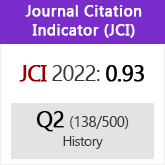Una sepultura con armas de baja época ibérica (o época romana republicana) en la necrópolis del «Cerro de las Balas» (Écija, Sevilla)
DOI:
https://doi.org/10.3989/gladius.2000.70Keywords:
Iberian iron Age weapons, Roman Weapons, Iberian cemeteriesAbstract
Iberian Iron-Age weapons are extremely rare in western Andalusia, due mainly to the absence of the normative cremation cemeteries typical of other areas in the Peninsula, cemeteries where nearly all of the approximately six thousand Iron Age weapons that we know have been documented. In this paper we present one of the very few exceptions to this rule: a ‘warrior’ burial found in the Iron Age cemetery cemetery at ‘Cerro de las Balas’ (or «bullets’ hill», so known after the many sling projectiles found in the neighbourhood). This is an important find due to three facts: the type of weapons (among them a sword of the gladius hispaniensis type and a dagger of a very late Celtiberian or very early Roman type); the date, between the Late Iberian period and Early Roman rule; and the closed assemblage of weapons: sword, dagger and two javelins or short spears. It is quite possible that the burial is to be dated to the beginning of the second century BC, and therefore that the sword found in it is the earliest known example of the Roman gladius hispaniensis sword... or the latest version of the Iberian prototype for it. Finally, we discuss the proximity of this burial to the caesarian battlefield of Munda (45 BC) to conclude that in all probability these are two completely independent events, the burial being probably much earlier.
Downloads
Download data is not yet available.
Downloads
Published
2000-12-30
How to Cite
Núñez Pariente de León, E., & Quesada Sanz, F. (2000). Una sepultura con armas de baja época ibérica (o época romana republicana) en la necrópolis del «Cerro de las Balas» (Écija, Sevilla). Gladius, 20, 191–220. https://doi.org/10.3989/gladius.2000.70
Issue
Section
Articles
License
Copyright (c) 2000 Consejo Superior de Investigaciones Científicas (CSIC)

This work is licensed under a Creative Commons Attribution 4.0 International License.
© CSIC. Manuscripts published in both the printed and online versions of this Journal are the property of Consejo Superior de Investigaciones Científicas, and quoting this source is a requirement for any partial or full reproduction.All contents of this electronic edition, except where otherwise noted, are distributed under a “Creative Commons Attribution 4.0 International” (CC BY 4.0) License. You may read here the basic information and the legal text of the license. The indication of the CC BY 4.0 License must be expressly stated in this way when necessary.
Self-archiving in repositories, personal webpages or similar, of any version other than the published by the Editor, is not allowed.














